
All-in-one Cervical System,
efficiency in your hands
The Mecta-C family of Cervical Interbody Fusion Cages and Anterior Plates represent a complete system to fuse and mechanically support the cervical spine in case of degenerative disease, trauma, tumors and deformity. The Mecta-C Cage System consists of PEEK and titanium coated PEEK intervertebral fusion devices capable to offer effective load sharing and optimal biocompatibility. The Mecta-C Plate System is designed to offer biomechanical stability in situ and flexibility in terms of implant range and configurations.
The All-in-one system allows the surgeon to choose among 3 main systems:
Self drilling, self tapping, and rescue screws are available to accommodate the surgeon’s needs in primary as well as revision cases.
| Variable | Fixed | |
|---|---|---|
| Self Tapping 4mm |  |
 |
| Self Drilling 4mm |  |
 |
| Self Tapping 4.5mm |  |
 |
Sterile implants: provide full implants traceability while eliminating the risk of reprocessing!
Anatomic design allows for optimal fit.
Different anatomical designs to restore the disc space height and lordosis according to specific patient needs
1. As low as 2mm in sagittal thickness, the low profile of the plate decreases the risk of dysphagia[2,3,4] and reduces soft tissue irritation [5]
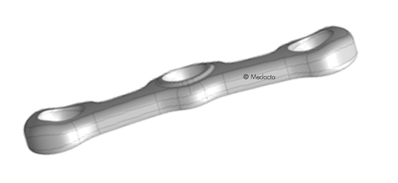
2. Low cranio-caudal profile combined with screw’s high range of motion maximizes the distance to the adjacent intervertebral discs, and avoids potential ossification [6]

Up to 28° range of motion of the cranial and caudal screws allow the surgeon to choose the desired screw trajectory according to patient specific anatomies.

ENHANCED STABILITY
The pyramidal teeth and lateral tantalum spikes keep the implant securely in place to increase the migration resistance
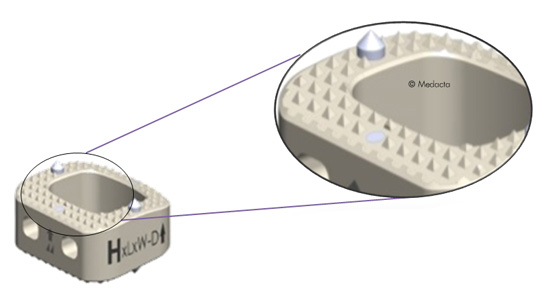
SECURE ANTI-MIGRATION MECHANISM
The anti-migration screw expands the head of the cervical screw and locks it into the plate.
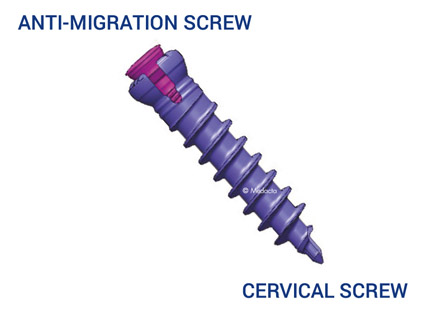
The large central bone graft area may help to accelerate bone fusion through the implant.
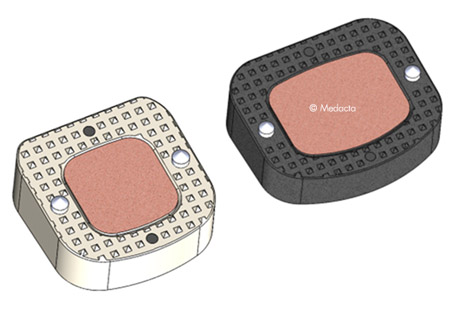
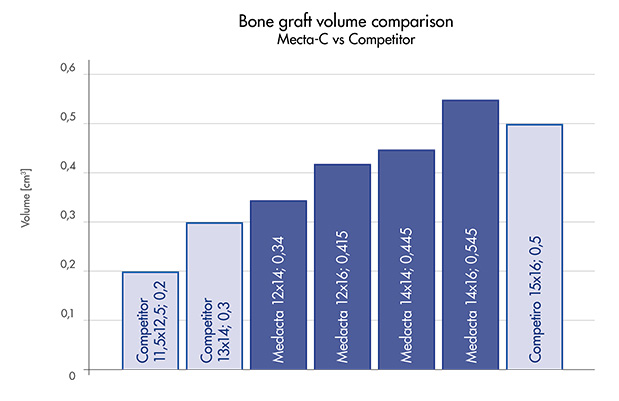
Mecta-C bone graft volume is higher compared to one of the leading competitor’s.

The radiolucency of PEEK provides a clear radiographic assessment in combination with the radio opacity of the tantalum markers that allow the surgeon to verify the correct implant position.
The titanium coated cage (Ti-PEEK) further supports the correct implant alignment thanks to the external titanium “halo” visible on imaging .

The large central window of the Mecta-C Plate:
The Mecta-C System has one dedicated instrumentation set compatible with both cage and plate insertion.

Stable cage inserter with a dual lock release mechanism

Standard screwdriver with high torsional stiffness.

Modular solution designed to deliver steep angled screw trajectory in more demanding technique
Supporting Literature
[1] Jan Stulik et al. Fusion and failure following anterior cervical plating with dynamic or rigid plates: 6-months results of a multi-centric, prospective, randomized, controlled study
[2]Chin KR, Eiszner JR, Adams SB Jr. Role of plate thickness as a cause of dysphagia after anterior cervical fusion. Spine (Phila Pa 1976) 2007;32:2585–2590.
[3] Lee MJ, Bazaz R, Furey CG, Yoo J. Influence of anterior cervical plate design onDysphagia: a 2-year prospective longitudinal follow-up study. J Spinal Disord Tech 2005;18:406–409.
[4] Cho SK et al. Dysphagia following anterior cervical spinal surgery, Bone Joint J;(95B) 868–73, 2013;
[5] Singh K et al., Spinal Instrumentation - Surgical Techniques (ch.32) p.231;
[6] Park et al. Development of Adjacent-Level Ossification in Patients with an Anterior Cervical Plate
8th M.O.R.E. International Symposium Proceedings
Pediatric and syndromic cervical deformities (Deszö J. Jeszenszky)
Development of a new technique for cervical pedicle screw and Magerl screw insertion using a 3-Dimensional image guide(Yoshiharu Kawaguchi)
Different surgical options for cervical spine indications (B. Andrew Castro)
How to reduce dysphagia after anterior cervical spine surgery? (Markus Pietrek)
Adjacent level degeneration after single level cervical fusion - a study of more than 600 patients (Michael Winking)
Revision strategies in cervical spine surgery (Sabatino Bianco)

Medacta biologics are made of fully synthetic bone that correspond to the calcium phosphate component of natural
bone in chemical composition and crystalline structure.
Medacta offers bioactive, biocompatible biologics representing a suitable bone growth substitute, and can be easily applied directly into the cage.